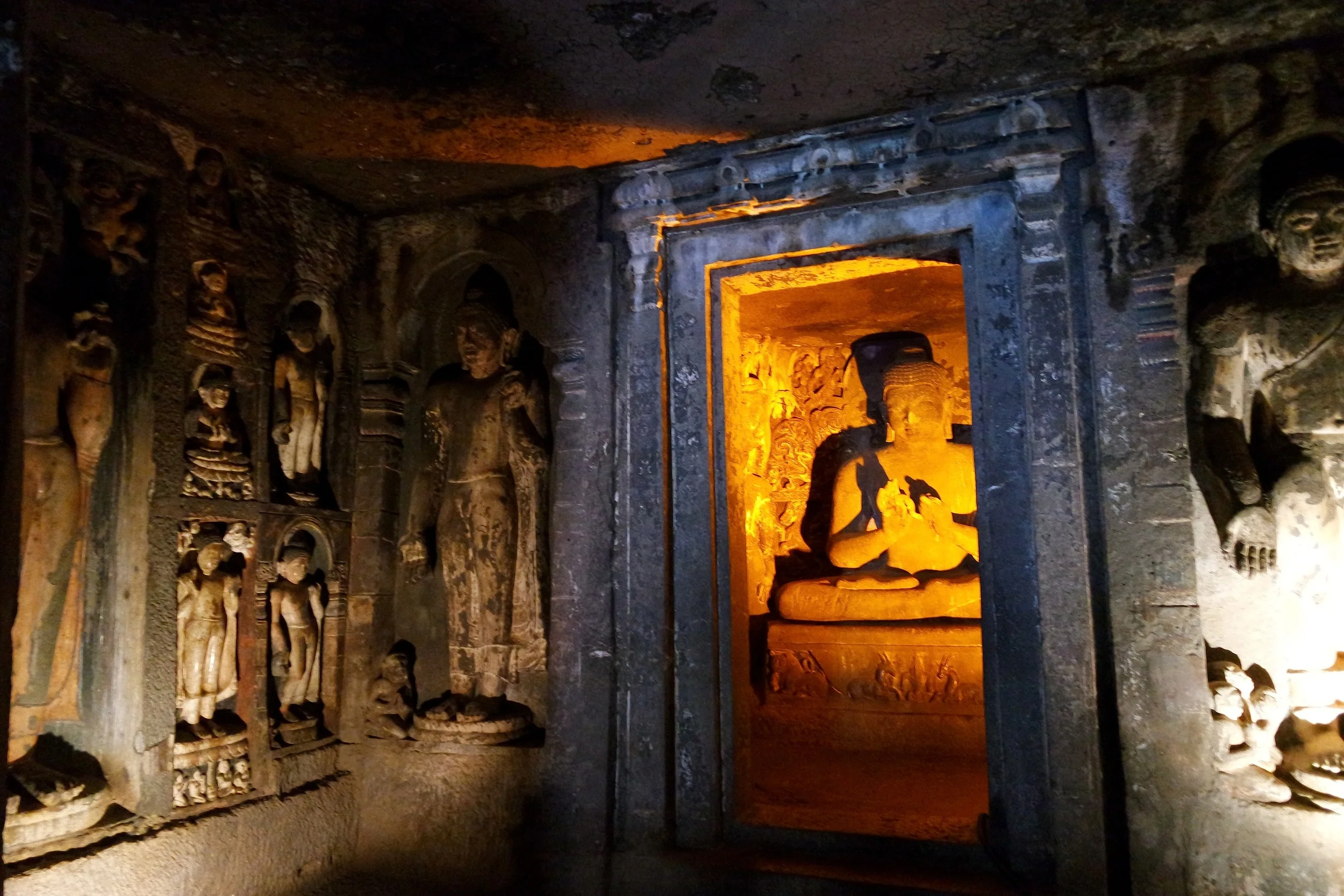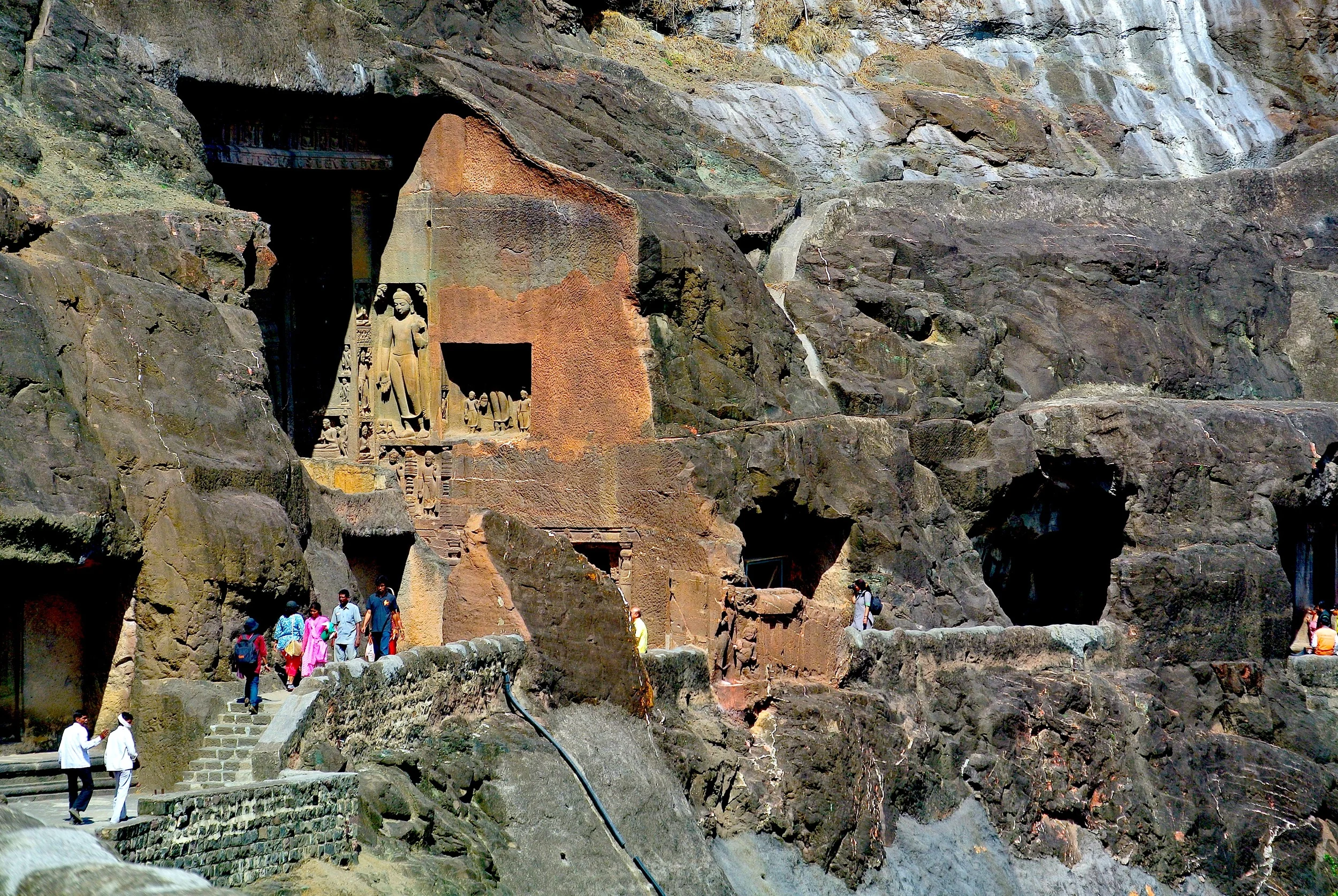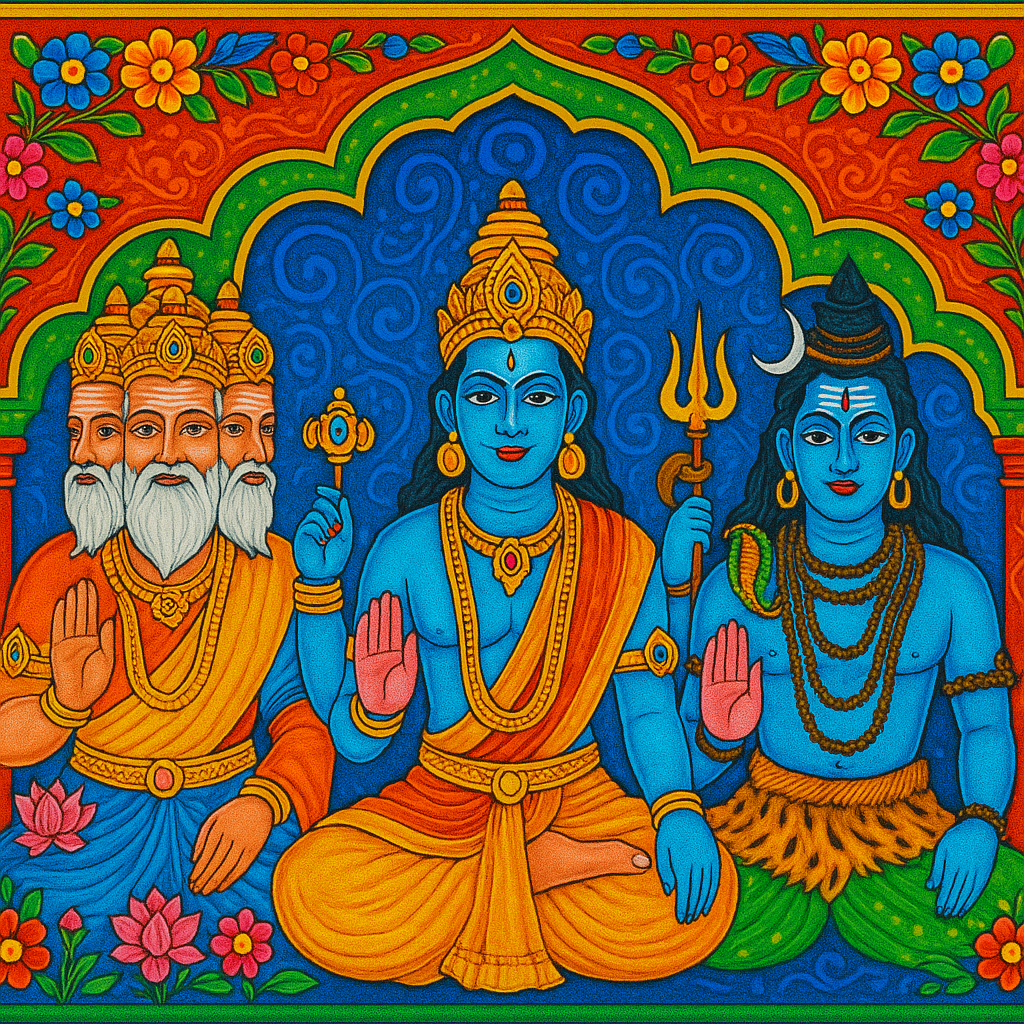The Ajanta Caves outside of Aurangabad, India
Stay in Aurangabad and be prepared to explore this ancient Buddhist monastery carved out of the mountainside.
Tip 1: Head off the beaten path.
If you like going all Indiana Jones on your vacation, as Wally and I do, consider adding the Ajanta and Ellora Caves to your India itinerary. These spots aren’t too well known among Western tourists — you’ll mostly see Indians and Buddhist monks from Southeast Asia.
“By midday, the ground was intensely hot, making our barefoot trek across the rocks like walking over coals.”
Tip 2: Decide if you have time to hit both Ajanta and Ellora.
We had two days in Aurangabad, so we were able to visit both sets of caves. The concierge pretty much insisted that we visit Ajanta first, and we couldn’t figure out why. After we had explored both, we wondered if this was because Ajanta, which are entirely Buddhist, might be a bit of a letdown after the diversity of the Ellora site.
Tip 3: Stay in Aurangabad.
Ajanta is nearly two hours away from Aurangabad, a big city with an airport that works as a good base for both the Ajanta and Ellora Caves.
Tip 4: Make sure you understand where you’ll meet your driver.
We arranged transport to the Ajanta Caves through our hotel, Lemon Tree.
The driver who had picked us up the evening before told us he would be there promptly at 8 a.m. so that we could beat the throngs.
What we did not know was that he actually meant a driver from the hotel — not necessarily him, and that said driver would not come into the hotel lobby to announce he had arrived. We’re not sure that this is the norm, but he waited outside until we went out to him.
Thankfully, a concierge working that morning realized this and directed us to the vehicle after we had sat in the lobby for 45 minutes.
Tip 5: Beware the touts.
After reaching the parking lot outside the caves, we passed through an open-air market with aggressive touts, a couple of which approached us and asked our names and where we were from. They offered each of us a small quartz crystal, pressing them into the palms of our hands and saying, “No money — you visit my shop after.”
Believe us — they’ll remember you. We did visit their shops, hardball haggled (going into other tents to compare prices) and scored some good deals.
Tip 6: Take your shoes with you.
We boarded a tour bus and soon caught our first glimpse of the horseshoe-shaped bend in the Waghora River gorge where the caves are located.
As it was required for us to remove our sandals prior to entering the caves, we decided to leave them at Cave 1 rather than putting them on and taking them off every single time.
We failed to realize that there were 29 caves in all, and by midday the ground was intensely hot, making parts of our barefoot trek across the rocks like walking over coals.
The best thing to do is bring a pair of shoes you can easily slip on and off before entering each cave.
Tip 7: Learn a bit about how these caves and paintings were made.
After you enter the dimly lit cave interiors, your eyes begin to adjust, revealing frescoes depicting the magical Jataka stories about the previous incarnations of Buddha, in both human and animal form.
The oldest caves date back to the 2nd century BCE, with a more elaborately painted addition from the 6th century BCE.
Interiors of many of the cave surfaces are covered with a plaster mixture consisting of clay, lime, hay and dung.
Paintings were made while the plaster was wet. Oxide red and yellow were created from ochre, black from soot, white from the clay mineral kaolin, lime and green from another local mineral. You’ll occasionally see blue, which came from pulverized semiprecious lapis lazuli.
Tip 8: Get your head around the fact that these caves were once a Buddhist monastery.
The caves are comprised of two types. The chaitya (prayer halls) were excavated around 200 BCE and were among the first used purely for congregational worship. The viharas (monasteries) contain chapels as well as small cubical dormitory cells where monks once slept.
The site was abandoned in 477 after the sudden death of Ajanta's most important sponsor, Emperor Harisena.
It must have been incredible when English hunter John Smith accidentally rediscovered the largest of the caves, later named Cave 10, in 1819 in the middle of chasing a tiger. –Duke































